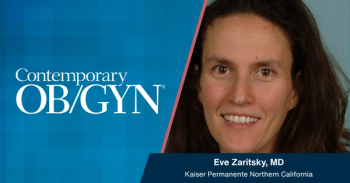
6 Reasons Why Ob/Gyns and Patients Need Midwives
Midwifery and obstetrics don’t need to be mutually exclusive disciplines. Here are 6 examples of how midwives and OBs can give complementary care that benefits patients.
In many respects, midwives and midwifery services are misunderstood. Ob/Gyns and midwives may feel that they are at odds with one another, vying for the care of pregnant women and new mothers. However, the two disciplines do not have to be mutually exclusive: midwives and Ob/Gyns can provide care that complement each other and are of the best benefit to women and their families. In fact, this interdisciplinary approach may be the best way for developing countries to lower their rates of maternal death and infant mortality. The recent series "Midwifery," published by The Lancet, looks closer at midwife services and how they can benefit women and babies globally.1
1. Midwives Can Provide Supportive Care for Patients-and Their Families
Ob/Gyns care for women during their pregnancy, and see to their medical needs, but time and resources are limited. A midwife can care for healthy mothers and newborns, as well as the rest of the family, freeing up Ob/Gyns to better optimize their time on specialized care. Midwives are not just available for the prenatal period and the birth, but can also provide the new mother with care in the first hours after birth, assisting with breastfeeding and other practical matters. Midwives are also trained to provide routine follow-up care, either at a hospital or clinic, or in the patient's home.
2. Midwives Can Assist in Family Planning
Family planning is a major health topic for women, especially for those that live in the developing world, where these needs are not currently being met.2 Increased access to family planning that results in lowered fertility and fewer unintended pregnancies could be provided by midwives. Effective family planning can decrease the incidence of maternal deaths.2
3. Midwives Can Help Countries Meet Their Millennium Development Goals
Many countries are not on track to meet their Millennium Development Goals (MDGs) of reducing maternal and infant mortality sufficiently by 2015. This indicates that the measures currently being taken are not sufficient in some areas of the world, and a change of plan is needed to make these goals more attainable.3
4. Integrated Care Is Key-for 2015 Goals and Beyond
Current standards of care aren't comprehensive enough to care for women and babies, especially in areas that may experience population growth. Access to care from a midwife is a cost-effective measure that can help prevent maternal and neonatal deaths in developing nations.2 Even in cases where specialized care provided by an Ob/Gyn is needed, midwives can play a role in providing supportive care to pregnant women and new mothers, as well as to their families.
5. Most Pregnant Mothers Don't Require Specialized Care
There is an increase in the use of specialty care to treat pregnant women, when the majority of healthy women can be served well with the primary care model.4 Trained midwives are capable of administering this level of care, which may result in a decreased use of interventions and a support of normal labor and birth.3 For cases that require specialized care, midwives can assist in helping women obtain access to the care they require.2
6. Midwifery Can Be Practiced Wherever Women Are
Midwives can attend to a pregnant woman wherever is most comfortable and convenient: in a clinic, a hospital, or even at home. Having trained midwives in areas of the world that are difficult to access could make care available to women who might not otherwise have access to obstetrics services.
References:
1. Midwifery. Lancet. 23 Jun 2014. Available at:
2. Renfrew MJ, McFadden A, Bastos HM, et al. Midwifery and quality care: findings from a new evidence-informed framework for maternal and newborn care. Lancet. 23 Jun 2014. Available at:
3. Horton R, Astudillo O. The power of midwifery. Lancet. 23 Jun 2014. Available at:
4. Sakala C, Newburn M. Meeting needs of childbearing women and newborn infants through strengthened midwifery. Lancet. 23 Jun 2014. Available at:
Newsletter
Get the latest clinical updates, case studies, and expert commentary in obstetric and gynecologic care. Sign up now to stay informed.




















